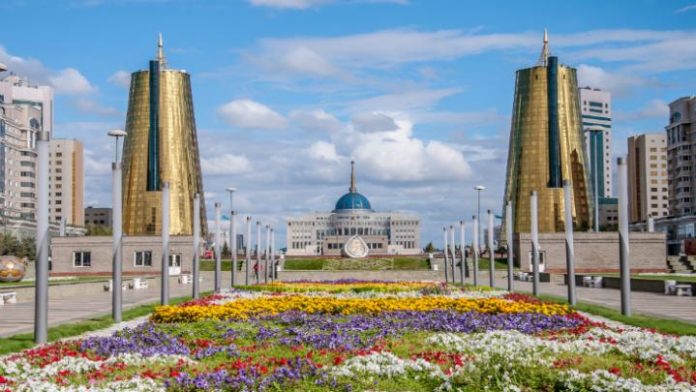Kazakhstan is to launch compulsory insurance in 2020, which may significantly reduce outbound medical tourism. It is likely that increased competitiveness will prepare the country’s healthcare institutions for more inbound international medical tourism. IMTJ looks at the details.
In January 2020, Kazakhstan plans to launch a new system of compulsory insurance. The system is meant to lower the cost of healthcare and expand the number of Kazakhs who have access to healthcare, through compulsory contributions by citizens and businesses to the national healthcare system.
Government officials hope to launch the system nationwide after it is refined in a pilot format, which is being tried now in the Karaganda Region. Details of the programme, such as pricing, assigning patients to clinics and doctors and how to monitor quality still need to be worked out.
According to ministry officials, the insurance model chosen by Kazakhstan reflects the country’s social, economic and demographic situation. The Compulsory Social and Medical Insurance (CSMI) programme is less expensive and carries fewer political risks than private insurance.
Companies and citizens make contributions to the Fund for Social and Medical Insurance (FSMI), where companies make bigger contributions to compensate for relatively low incomes.
The government has been working on the transition for a decade. A law on it was adopted five years ago. Then, the state amended legislation, established the FSMI, made a pool of private and public service providers, listed the services and prepared procurement and quality control systems.
The next step is January 1, 2020, when Kazakhstan’s healthcare will shift to CSMI, the nation’s most serious step in 20 years for expected changes in the provision of medical services.
Under CSMI, public and private clinics compete for patients on relatively equal terms with a single purchaser of medical services who is also the controller of the service quality.
The regulator, the Ministry of Healthcare, says the policy offers a three-tier model with guaranteed medical care covered by the state, an additional package of CSMI and voluntary medical insurance not covered by the guaranteed package, with stages to be launched step-by-step.
It is expected that the insurance policy will impact the financing of healthcare as the main goal of introducing healthcare insurance in Kazakhstan is to reduce out of pocket expenses of the population from 42% to 30% and minimise the financial risks to citizens in the event of a sudden and urgent need for high-tech and expensive treatment.
Total private and public health expenditure in 2017 was US$4.7 billion, with 42% being paid for by individuals.
CSMI seeks to address the ever-growing demand for increased financing for medicine and its systemic underfunding. In 2009-2014, budget expenditures on healthcare grew 1.9 times with total expenses growing 2.1 times. The Kazakh government has problems financing medical care unless helped by businesses and the population. So the new system is one of joint responsibility of the state, employers and taxpayers. The FSMI accumulates fees, plans cost and payment for services, keeps consumer and medical organisations’ records and monitors service quality.
The innovation of the new policy is in the compulsory collection of premiums from both employers and citizens. Now, only employers and entrepreneurs make contributions. By 2022, employers and workers are scheduled to pay 3% and 2% respectively. The state will contribute for 15 groups of the population, including pensioners, children, people with disabilities, unemployed, pregnant women who are unemployed and families raising disabled children. In 2020, the state contribution will be 1.4%, in 2021, 1.6% and in 2022,1.8%.
The guaranteed volume of medical services is designed to not leave anyone out of basic healthcare, such as primary and emergency care, and to treat non-communicable and transmittable diseases.
The state is also responsible for ambulance, primary, emergency care, as well as diagnostic, outpatient and inpatient care for significant diseases including tuberculosis, hepatitis and AIDS/HIV.
The model seeks to solve the issue of the quality of medical services by encouraging competition between private and public clinics. The FSMI now has a database of potential suppliers, 1,400 medical organisations, not equally represented in every region, but an average city will see increased competition for a patient.
The government hopes that the reform will trigger investment in healthcare services.
A potential problem is that the population only totals 18.5 million people. The government will have to pay for 11 million, mainly children and elderly, two sectors growing in numbers due to high birth rate and increased life expectancy.
Competitiveness will prepare the country’s healthcare institutions for international medical tourism. Kazakhstan’s clinics are already offering dentistry, IVF and cardiac surgery services. In 2018, 2,000 medical tourists went to Kazakhstan, mostly from Russia and Baltic states.
The country borders Turkmenistan, Uzbekistan, and Kyrgyzstan to the south; Russia to the north; Russia and the Caspian Sea to the west; and China’s Xinjiang Uygur Autonomous Region to the east. Up to 30,000 local Kazakhs go overseas for medical treatment. As this is not a wealthy country, citizens getting free local healthcare will be reluctant to go elsewhere, so outbound numbers are expected to fall.
For more analysis of international patient flows in and around Kazakhstan, sign up to the IMTJ Country Profiles.








 ©2024 All rights reserved LaingBuisson
©2024 All rights reserved LaingBuisson 


